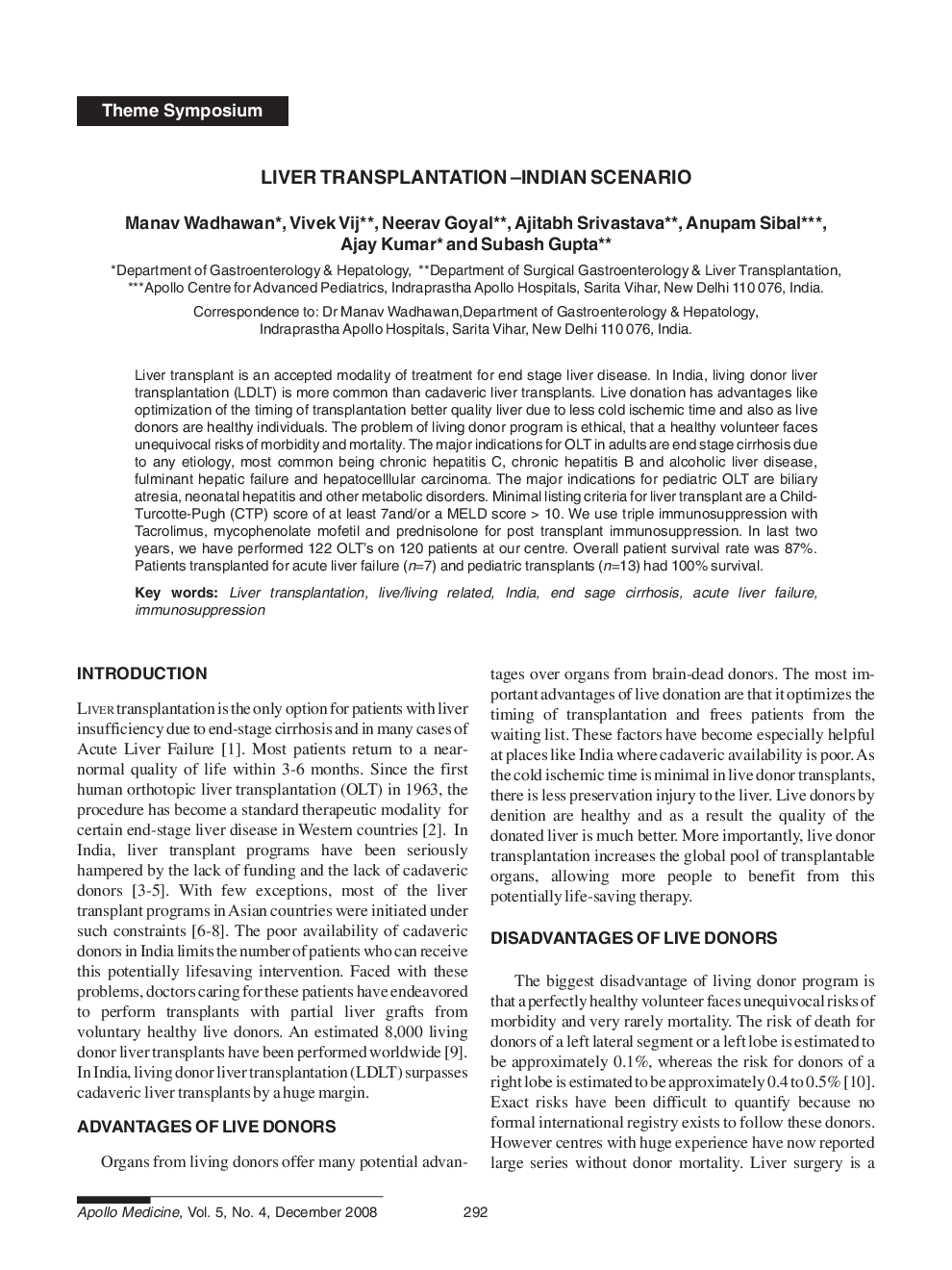| Article ID | Journal | Published Year | Pages | File Type |
|---|---|---|---|---|
| 3235174 | Apollo Medicine | 2008 | 5 Pages |
Liver transplant is an accepted modality of treatment for end stage liver disease. In India, living donor liver transplantation (LDLT) is more common than cadaveric liver transplants. Live donation has advantages like optimization of the timing of transplantation better quality liver due to less cold ischemic time and also as live donors are healthy individuals. The problem of living donor program is ethical, that a healthy volunteer faces unequivocal risks of morbidity and mortality. The major indications for OLT in adults are end stage cirrhosis due to any etiology, most common being chronic hepatitis C, chronic hepatitis B and alcoholic liver disease, fulminant hepatic failure and hepatocelllular carcinoma. The major indications for pediatric OLT are biliary atresia, neonatal hepatitis and other metabolic disorders. Minimal listing criteria for liver transplant are a Child-Turcotte-Pugh (CTP) score of at least 7and/or a MELD score > 10. We use triple immunosuppression with Tacrolimus, mycophenolate mofetil and prednisolone for post transplant immunosuppression. In last two years, we have performed 122 OLT's on 120 patients at our centre. Overall patient survival rate was 87%. Patients transplanted for acute liver failure (n=7) and pediatric transplants (n=13) had 100% survival.
